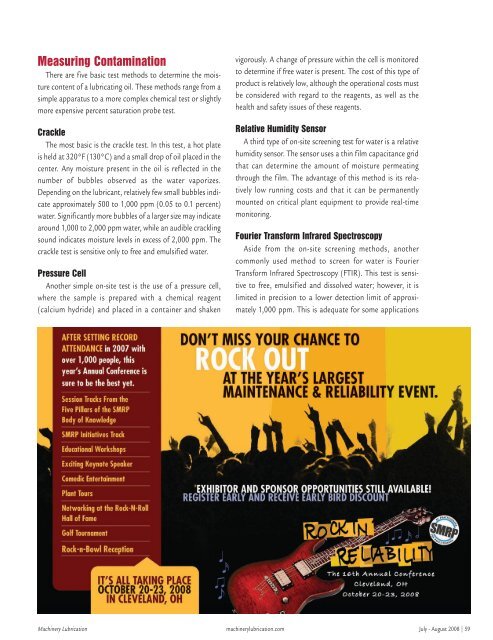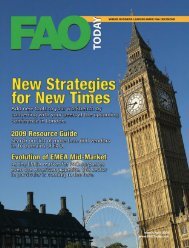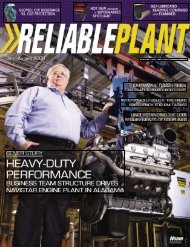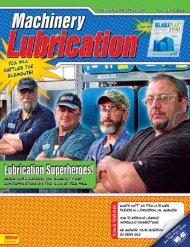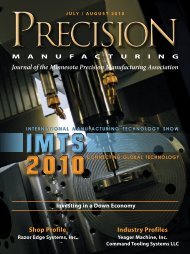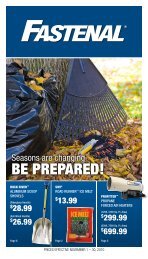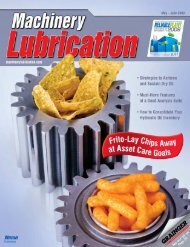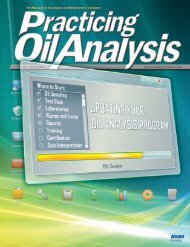Machinery Lubrication July August 2008
Machinery Lubrication July August 2008
Machinery Lubrication July August 2008
You also want an ePaper? Increase the reach of your titles
YUMPU automatically turns print PDFs into web optimized ePapers that Google loves.
Measuring Contamination<br />
There are five basic test methods to determine the moisture<br />
content of a lubricating oil. These methods range from a<br />
simple apparatus to a more complex chemical test or slightly<br />
more expensive percent saturation probe test.<br />
Crackle<br />
The most basic is the crackle test. In this test, a hot plate<br />
is held at 320°F (130°C) and a small drop of oil placed in the<br />
center. Any moisture present in the oil is reflected in the<br />
number of bubbles observed as the water vaporizes.<br />
Depending on the lubricant, relatively few small bubbles indicate<br />
approximately 500 to 1,000 ppm (0.05 to 0.1 percent)<br />
water. Significantly more bubbles of a larger size may indicate<br />
around 1,000 to 2,000 ppm water, while an audible crackling<br />
sound indicates moisture levels in excess of 2,000 ppm. The<br />
crackle test is sensitive only to free and emulsified water.<br />
Pressure Cell<br />
Another simple on-site test is the use of a pressure cell,<br />
where the sample is prepared with a chemical reagent<br />
(calcium hydride) and placed in a container and shaken<br />
vigorously. A change of pressure within the cell is monitored<br />
to determine if free water is present. The cost of this type of<br />
product is relatively low, although the operational costs must<br />
be considered with regard to the reagents, as well as the<br />
health and safety issues of these reagents.<br />
Relative Humidity Sensor<br />
A third type of on-site screening test for water is a relative<br />
humidity sensor. The sensor uses a thin film capacitance grid<br />
that can determine the amount of moisture permeating<br />
through the film. The advantage of this method is its relatively<br />
low running costs and that it can be permanently<br />
mounted on critical plant equipment to provide real-time<br />
monitoring.<br />
Fourier Transform Infrared Spectroscopy<br />
Aside from the on-site screening methods, another<br />
commonly used method to screen for water is Fourier<br />
Transform Infrared Spectroscopy (FTIR). This test is sensitive<br />
to free, emulsified and dissolved water; however, it is<br />
limited in precision to a lower detection limit of approximately<br />
1,000 ppm. This is adequate for some applications<br />
<strong>Machinery</strong> <strong>Lubrication</strong> machinerylubrication.com <strong>July</strong> - <strong>August</strong> <strong>2008</strong> 59


